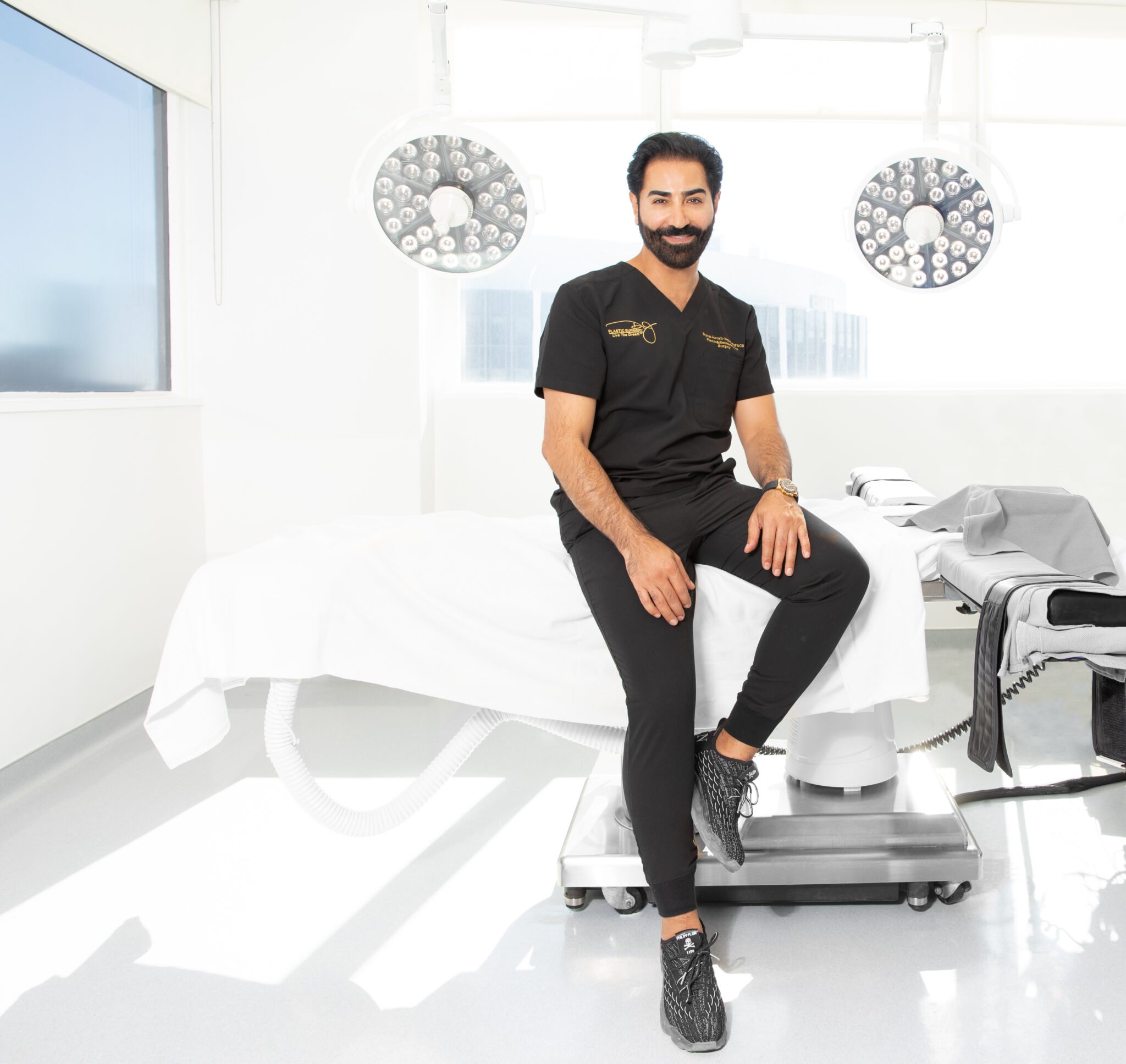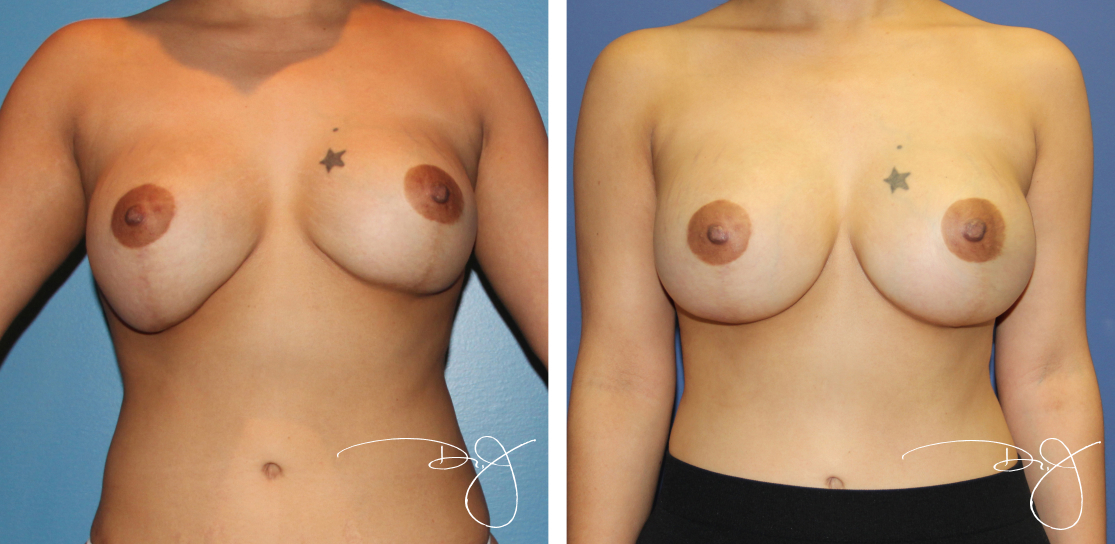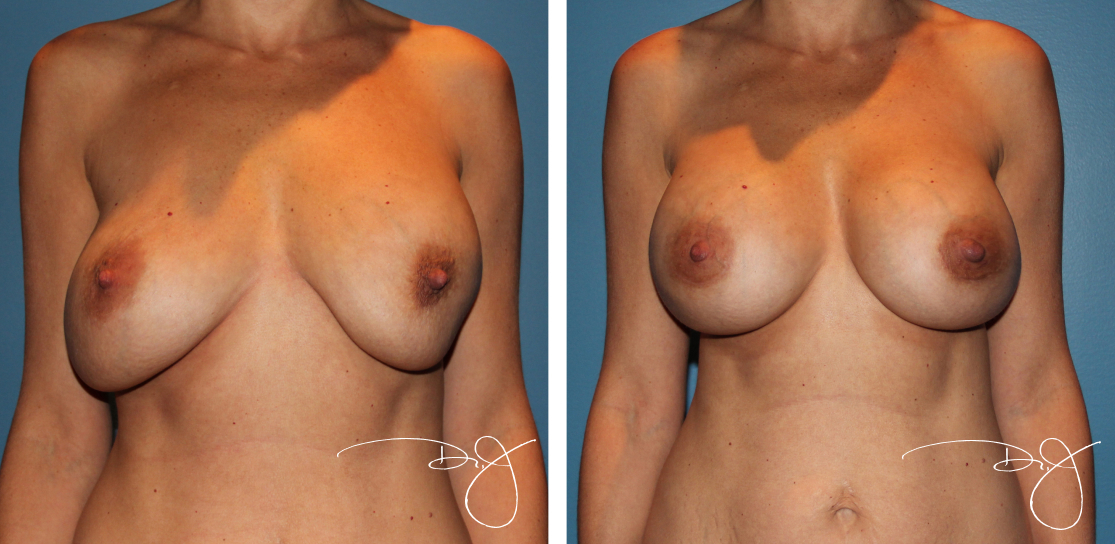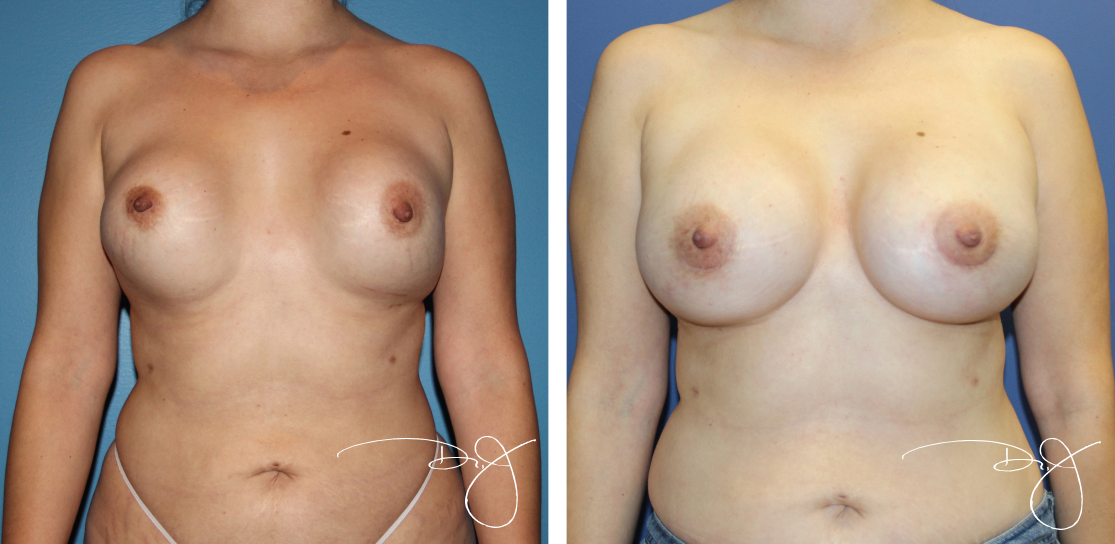Breast Reconstruction Beverly Hills
Reasons Patients Get Breast Reconstruction
Breast reconstruction covers a variety of procedures aimed at correcting complications, irregularities, and deformities, most of which may be associated with a prior procedure. Reconstruction can improve or eliminate issues associated with the following:
- Capsular contracture– a complication following breast augmentation in which the tissue around a breast implant becomes excessively hard, often within two years following surgery.
- A waterfall deformity, sometimes also called a “Snoopy” deformity, in which breast tissue may droop over the implant, creating a downward, sloping appearance.
- Excessive or highly conspicuous scarring, hypertrophic scars, stretched-out scars, or keloids following a breast procedure.
- Mastectomies or lumpectomies.
- Double bubble, a deformity that occurs after breast augmentation surgery when an implant is lower than a patient’s pre-existing inframammary fold (breast crease) and indents the lower section of the breast.
- Bottoming out of breast implants (i.e., when implants have dropped too low).

Breast Reconstruction Options
All of the above issues can be resolved with the right procedure. They include:
- Capsular contracture and the other implant-related deformities mentioned above are typically treated with a capsulectomy, removing the hardened capsule tissue, along with the removal and replacement of implants.
- For excessive scarring, the doctor may suggest injecting steroids under the skin, applying silicone cream to provide the best healing environment while flattening raised scars, and, in some cases, surgically removing the most visibly scarred portions of the skin.
- Asymmetries related to prior procedures can be corrected by removing and replacing problematic implants or evening out tissue when appropriate. Procedures may often include a customized breast lift to remove excess skin.
- Reconstruction following a mastectomy or lumpectomy may sometimes require a few procedures performed over a period of months. There are two basic approaches:
- Tissue expansion using a temporary implant made of a special type of silicone, followed by periodically injecting a saline solution to ready the area for a permanent implant.
- Flap reconstruction employs tissue removed from other areas of the body.
Strattice™
Dr. J is always at the leading edge of techniques that improve results for his patients. For breast reconstruction, he employs a powerful innovation. Strattice™ is a reconstructive tissue matrix derived from animal cells that offers benefits in terms of encouraging the regeneration and growth of new tissue for optimal healing. Often referred to as a sort of internal bra, Strattice™ acts as a scaffold for the patient’s connective tissue. It is easily accepted by the body and evidence indicates shows that it may reduce the chances of recurrences of capsular contracture.*
Strattice™ is not for every breast reconstruction patient. Some people may be allergic to one or more of its ingredients. Others may have ethical or religious objections to the use of porcine skin cells. Nevertheless, for patients who use this product, it can offer important long-term advantages.
*“A Novel Technique for Treatment of Recurrent Capsular Contracture Using Acellular Dermal Matrix in Aesthetic Revisional Breast Surgery,” Jason D. Johnson, DO, Steven D. Oven, DO, and Robert J. Skalicky, DO.
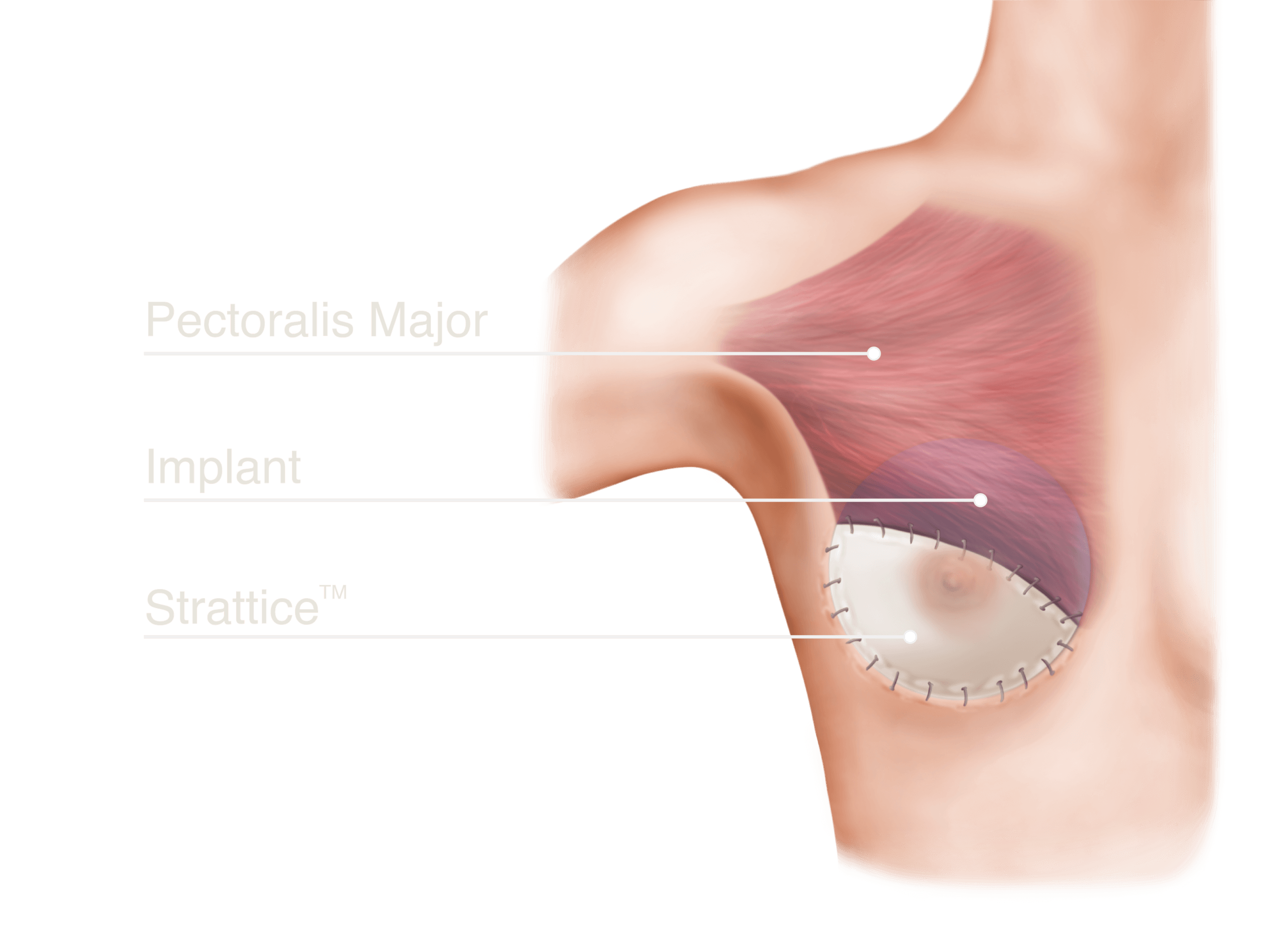

Recovery
Because of the widely varying types of breast reconstruction procedures, details regarding recovery also tend to vary widely. Complete recovery following procedures to remove and replace implants may take as long as a year.
Procedures that follow mastectomies are typically the most involved and therefore may require more than one recovery period. Recovery from the tissue expander method is typically speedier than with flap reconstruction. Both methods tend to require at least three to six weeks for recovery per procedure.
Working with Dr. J
Many experts believe plastic surgery is the most demanding of all medical specialties and Dr. J has emerged as an all-around leader. Double board-certified in both plastic and general surgery, Dr. J has earned an international following built on the recommendations of countless delighted former patients who share their experiences on social media.
Prospective reconstruction and revision patients can rest assured that one of Dr. J’s most frequently praised qualities is his kind, compassionate, and approachable demeanor which they agree makes the plastic surgery process far more comfortable. The doctor understands that reconstruction patients are often dealing with intense disappointment and confidence issues and he is here to do his part to help patients through the process.
If you are interested in additional information about breast reconstruction or any other type of procedure with Dr. J, we encourage you to contact our office and schedule a consultation today.
